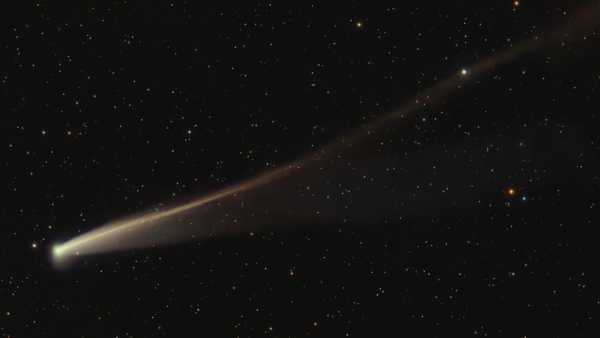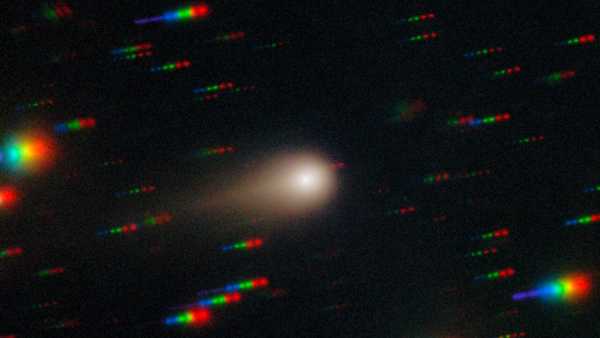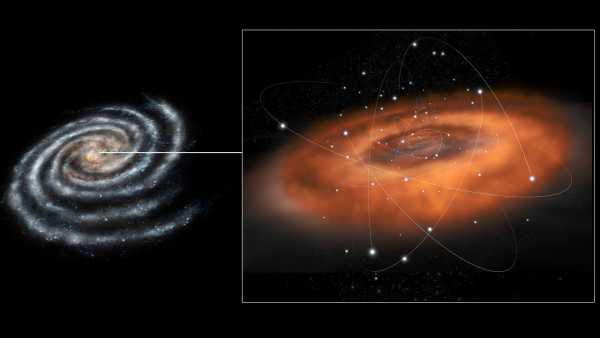
The Milky Way's galactic center (inset) is home to strange, deadly stars that manage to survive close encounters with our galaxy's supermassive black hole. A new study reveals the unintended side effects of these daring flybys. (Image: ESA–C. Carreau)
Black holes are often thought of as cosmic monsters, consuming anything unfortunate enough to stray too close. But new research shows they don't always win—some stars can slip past the Milky Way's central black hole, Sagittarius A*, lose mass, and stagger away. Wounded but alive, these survivors shine brighter than ever, leaving traces that astronomers are only now learning to recognize.
“Just like the Moon pulls on the Earth, a black hole pulls on a star with much greater force,” Reva Clark Bush, a doctoral student in astronomy at Yale University and lead author of the study, told Live Science in an email. If the pull is too strong, the star will disintegrate. However, some stars can withstand this strain. “One of the stars we simulated lost more than 60 percent of its envelope, but still retained enough core material to survive and escape,” Bush said.
The authors believe that by counting the number of surviving stars, astronomers will be able to measure how often Sagittarius A* feeds on nearby stars. This number could help explain how our galaxy's central black hole grew to a mass 4 million times that of the Sun.
You may like
-
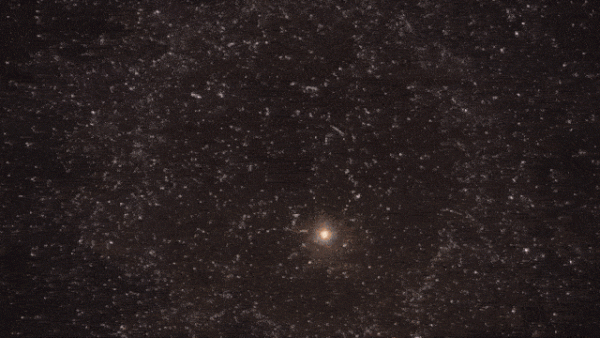
Watch the rarest type of black hole in the Universe swallow a star in a stunning animation.
-
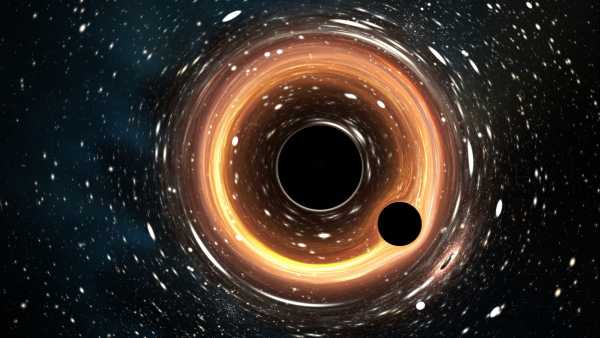
Scientists use Stephen Hawking's theory to propose “black hole chunks” – strange compact objects that could reveal new physics
-
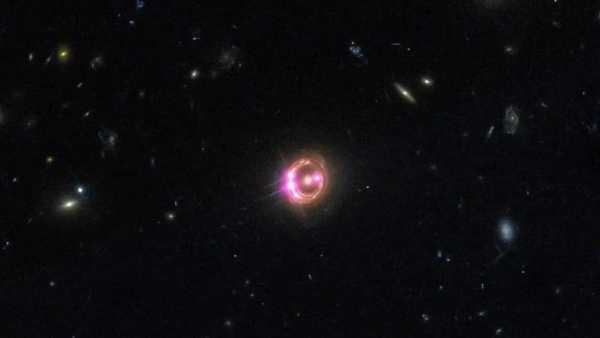
Astronomers use rare 'double zoom' to view black hole's corona in unprecedented detail
“Black holes are like chickens in a coop, eating only what's given to them,” Heino Falcke, a professor of astrophysics at Radboud University in the Netherlands who was not involved in the study, told LiveScience in an email. “This research provides new tools for searching for these distorted stars and studying the feeding history of the black hole at the center of our galaxy.”
Brighter After the Storm
The team used advanced 3D models to track stars flying past the Milky Way's black hole and their long-term evolution. The results, published on August 27 in The Astrophysical Journal Letters, showed that a close encounter, known as a partial tidal disruption event, can trigger a dramatic transformation. The surviving star can eject plasma streamers, expand exponentially in size, and glow up to 10 times brighter for thousands of years.
However, the show doesn't last long. The surviving stars gradually shrink in size and begin to disguise themselves as ordinary stars. Only their chemical makeup gives them away: violent processes push helium and nitrogen from the core to the surface.
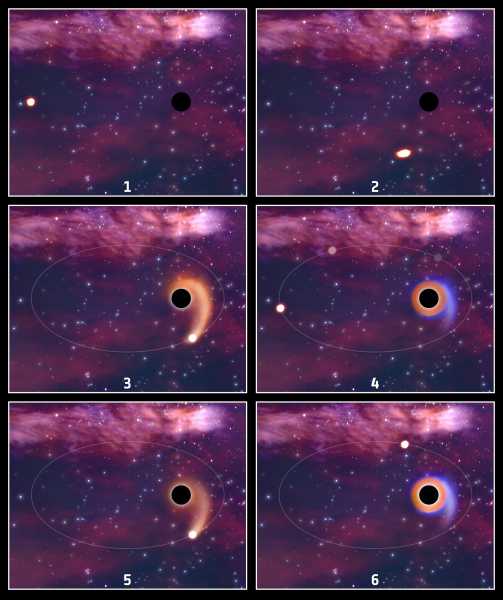
An illustration of a star passing close to a black hole, undergoing tidal disruption but not being completely destroyed. This process may lead to the formation of brighter, longer-lived stars at the center of the Milky Way.
“You'll need spectroscopic data,” Bush said, breaking down starlight into its color components, “to spot anomalies that indicate trauma.”
Giuseppe Lodato, an associate professor of astrophysics at the University of Milan who was not involved in the study, told Live Science in an email that while the surviving stars are well known to astrophysicists, this study stands out because it describes their brightness and chemical evolution over time.
Hint for G-objects
The study may also reveal a mystery that has lurked for years in the Milky Way's core. Astronomers have observed several fuzzy sources of light known as G-objects. These bodies move like stars, but in infrared images they appear as diffuse clouds. The surviving stars fit this description: they are bloated and shrouded in matter ejected during their disintegration.
“It's very interesting how the authors make a connection with the still mysterious and hotly debated G objects,” Selma de Mink, research director at the Max Planck Institute for Astrophysics in Germany, who was not involved in the study, told Live Science in an email.
RELATED STORIES
— The James Webb telescope may have discovered an entirely new class of cosmic object: a black hole.
Physicists claim that the probability of a black hole exploding within a decade is 90%.
— “Shocking”: Astronomers discover giant black hole growing 2.4 times faster than theoretical limit
Detecting these stars is no easy task. Sjoert van Velzen, an associate professor at the Leiden Observatory in the Netherlands who was not involved in the study, told Live Science in an email that even the most ambitious new surveys, such as those conducted by the Vera K. Rubin Observatory, will detect thousands of bright flares caused by complete tidal disruptions in distant galaxies, not their faint, fading remnants.
“The galactic center is crowded, and stardust blocks most of the optical light,” de Mink said. Infrared instruments like GRAVITY, which she compared to thermal cameras piercing smoke, are better suited to detecting swollen stars that may be hiding among the mysterious G-objects.
TOPICS Milky Way

Anirban Mukhopadhyay, Live Science contributor
Anirban Mukhopadhyay is a freelance science journalist. He holds a PhD in genetics and a master's degree in computational biology and drug discovery. He regularly writes for The Hindu and has contributed to The Wire Science, where he communicates complex biomedical research findings in accessible language. Beyond scientific writing, he enjoys creating and reading fiction, which blends myth, memory, and melancholy into surreal stories exploring themes of grief, identity, and the quiet magic of self-discovery. In his free time, he enjoys long walks with his dog and motorcycling in the Himalayas.
You must verify your public display name before commenting.
Please log out and log back in. You will then be asked to enter a display name.
Exit Read more
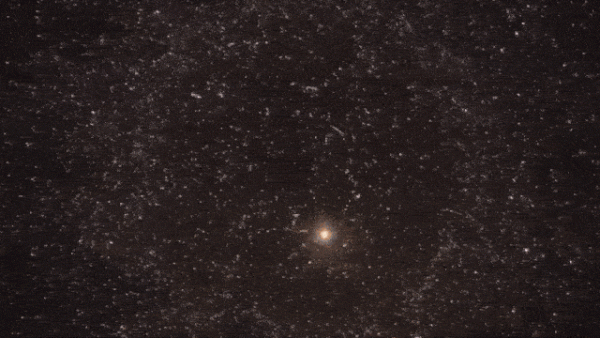
Watch the rarest type of black hole in the Universe swallow a star in a stunning animation.
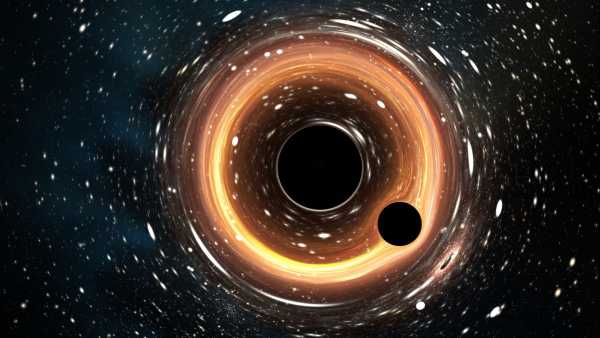
Scientists use Stephen Hawking's theory to propose “black hole chunks” – strange compact objects that could reveal new physics
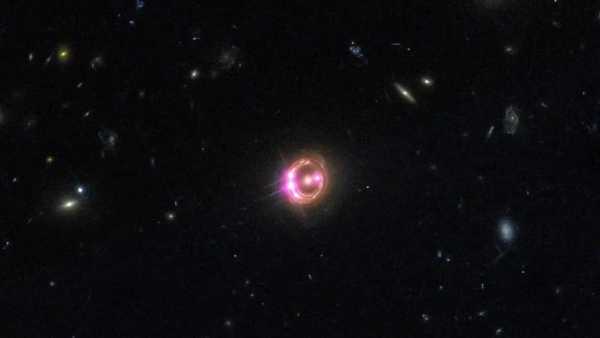
Astronomers use rare 'double zoom' to view black hole's corona in unprecedented detail
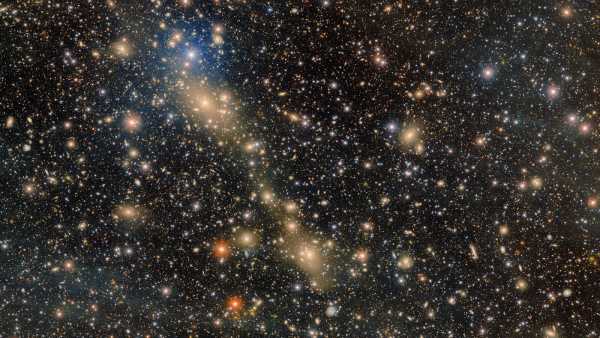
Scientists have captured a bridge of wandering stars being sucked from one galaxy into another.
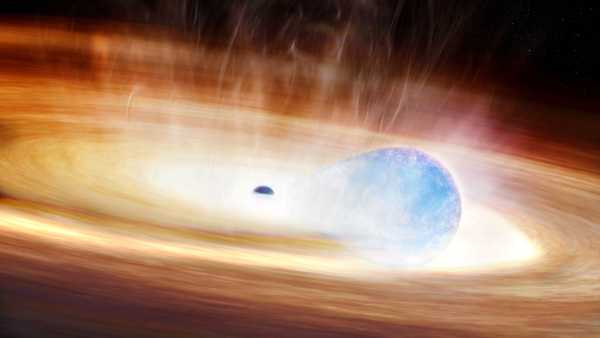
Spotify-like AI has helped discover a never-before-seen supernova as a greedy star tries to swallow a black hole.
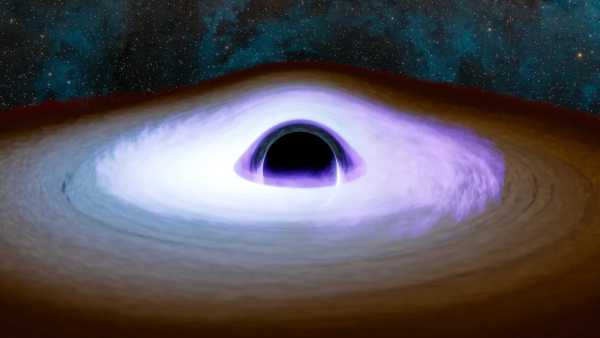
X-ray telescope finds something unexpected in the 'heartbeat of a black hole'
Latest news about black holes
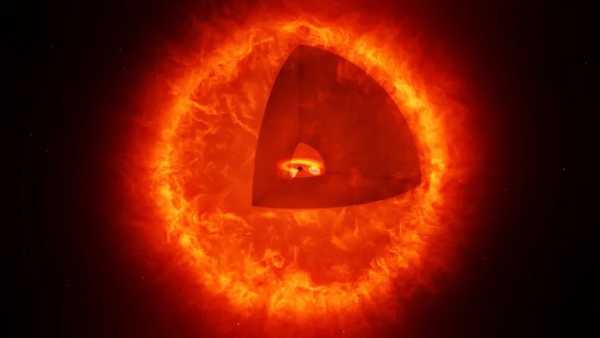
The James Webb Space Telescope may have discovered an entirely new class of cosmic object: a black hole.
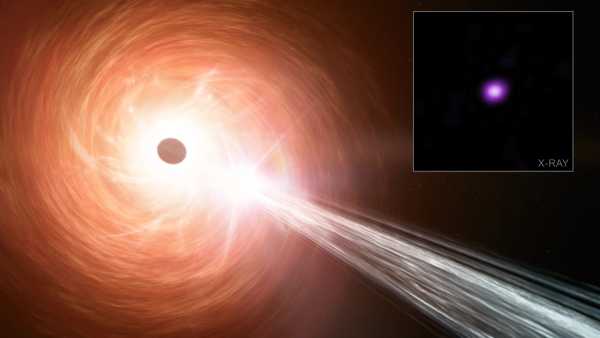
'Shocking': Black hole discovered growing 2.4 times faster than theoretical limit
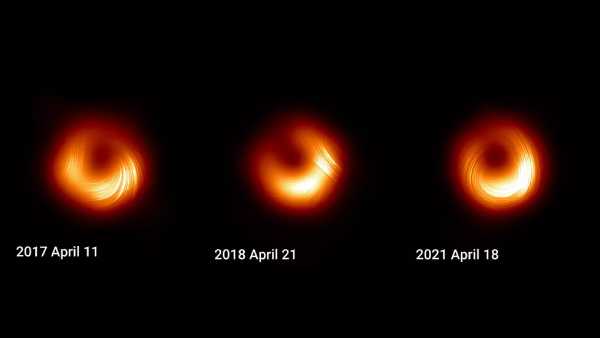
'Dramatic' changes detected in first-ever photographed black hole
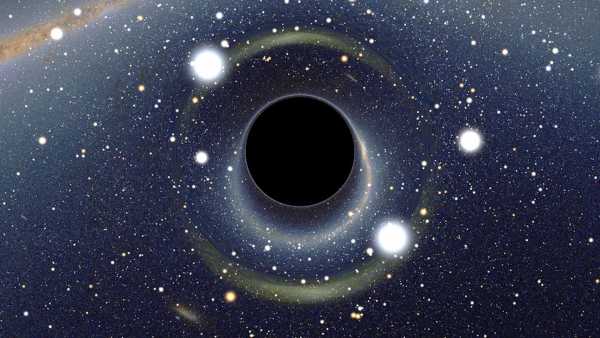
Physicists say there is a 90% chance that a black hole will explode within a decade.
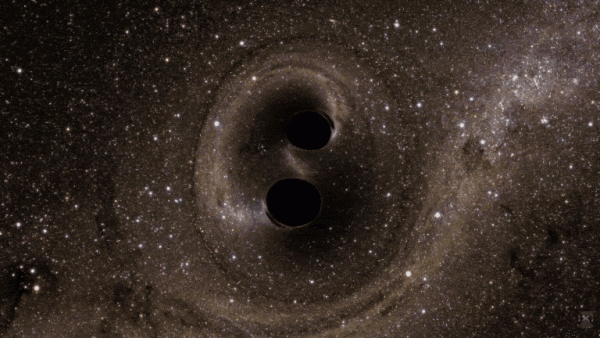
Scientists have measured for the first time the “natal kick” that sent a small black hole into space.
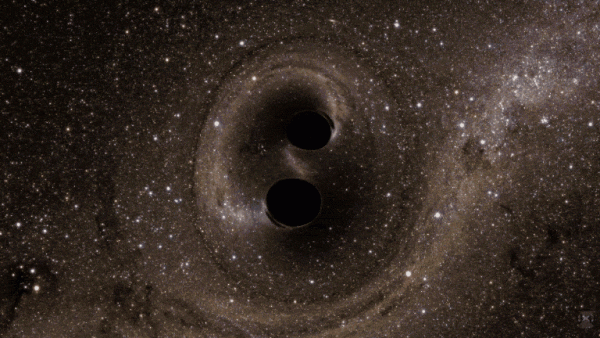
History of Science: Gravitational Waves Discovered, Proving Einstein Right – September 14, 2015
Latest news
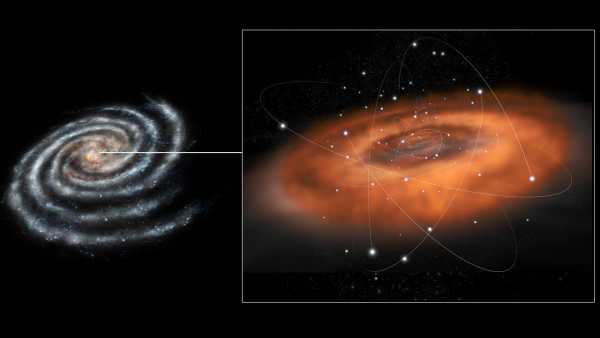
Stars live longer, strange life after almost being swallowed by a black hole
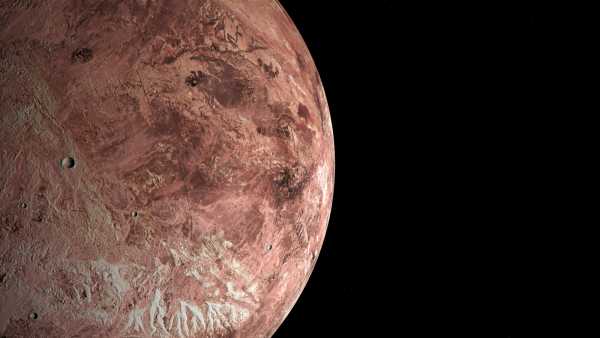
The James Webb Space Telescope has discovered a 'farting' dwarf planet with fluorescent gas in the outer solar system.
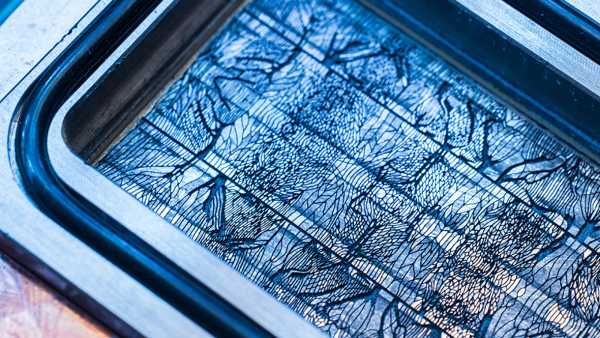
Microsoft unveiled new liquid-cooled computer chips that could prevent AI data centers from overheating.
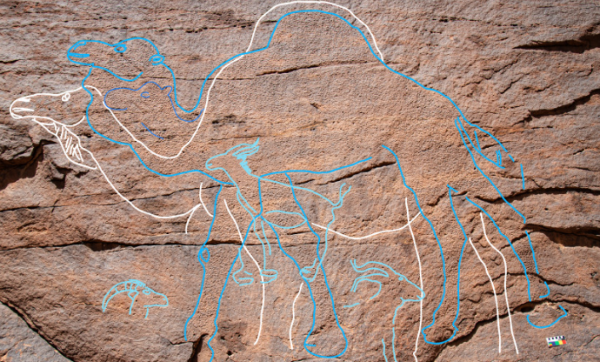
Life-size rock carvings point the way to Saudi Arabia's earliest inhabitants and the desert oases they used

The ancient Egyptian statue of “Messi,” found in the Saqqara necropolis, is “the only known example of its kind from the Old Kingdom.”
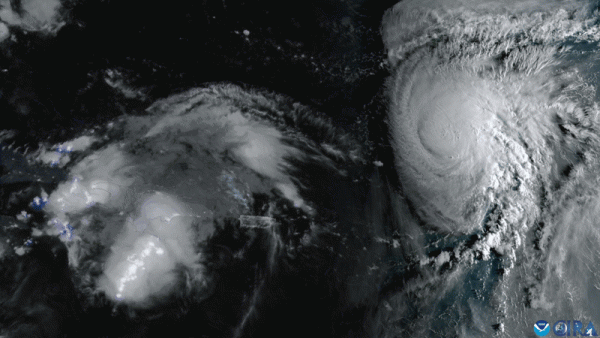
Hurricane Fujiwara's rare 'dance' could spare the East Coast from the worst of Tropical Storm Imelda.
LATEST ARTICLES
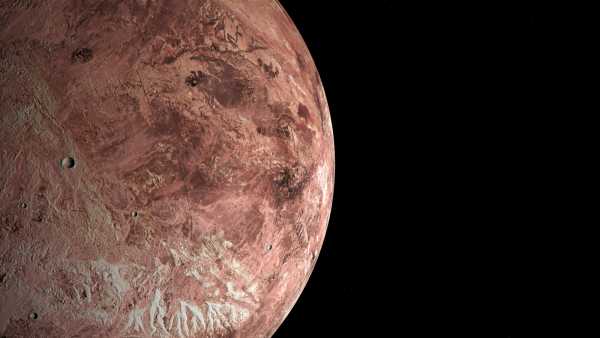
1The James Webb Space Telescope has discovered a “farting” dwarf planet with fluorescent gas in the outer solar system.
Live Science magazine is part of Future US Inc., an international media group and leading digital publisher. Visit our corporate website.
- About Us
- Contact Future experts
- Terms and Conditions
- Privacy Policy
- Cookie Policy
- Accessibility Statement
- Advertise with us
- Web notifications
- Career
- Editorial standards
- How to present history to us
© Future US, Inc. Full 7th Floor, 130 West 42nd Street, New York, NY 10036.
var dfp_config = { “site_platform”: “vanilla”, “keywords”: “type-news-daily,serversidehawk,videoarticle,van-enable-adviser-
Sourse: www.livescience.com



